Archive
Ruth Jacobi
- Ruth
- Jacobi
Ruth Richter, Ruth Jacobi-Roth
- 15-05-1899
- Poznań (PL)
- 21-09-1995
- California (US)
- Photographer
Ruth Jacobi was a German-speaking, Polish-born photographer who emigrated in 1935 to New York, where she opened a studio together with her sister Lotte Jacobi. She later had her own portrait studio.
Word Count: 31
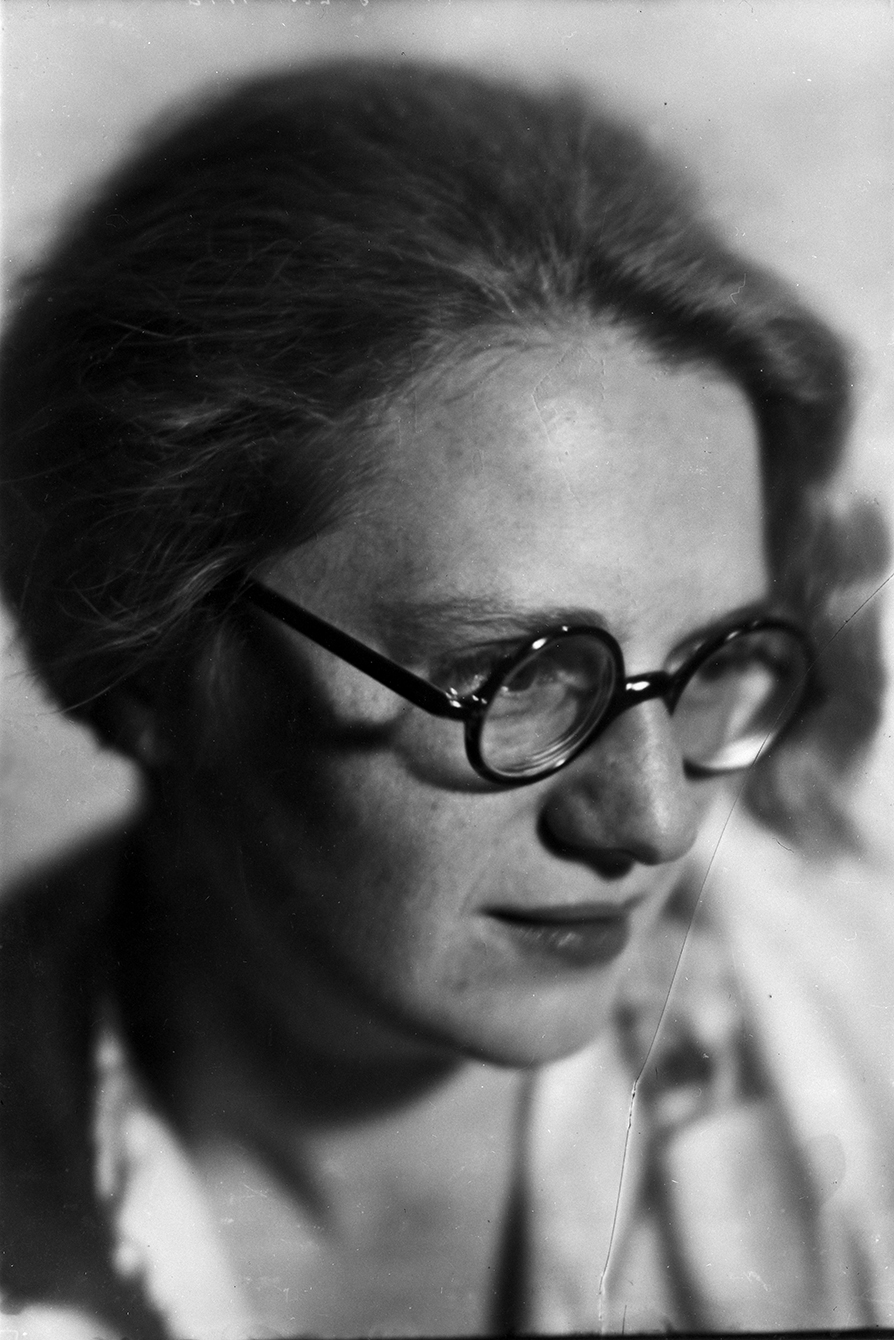
Lotte Jacobi, Ruth Jacobi mit Brille, c. 1935, New York (© 2021. University of New Hampshire). 
Lotte Jacobi, Ruth Jacobi, c. 1935, New York (© 2021. University of New Hampshire). 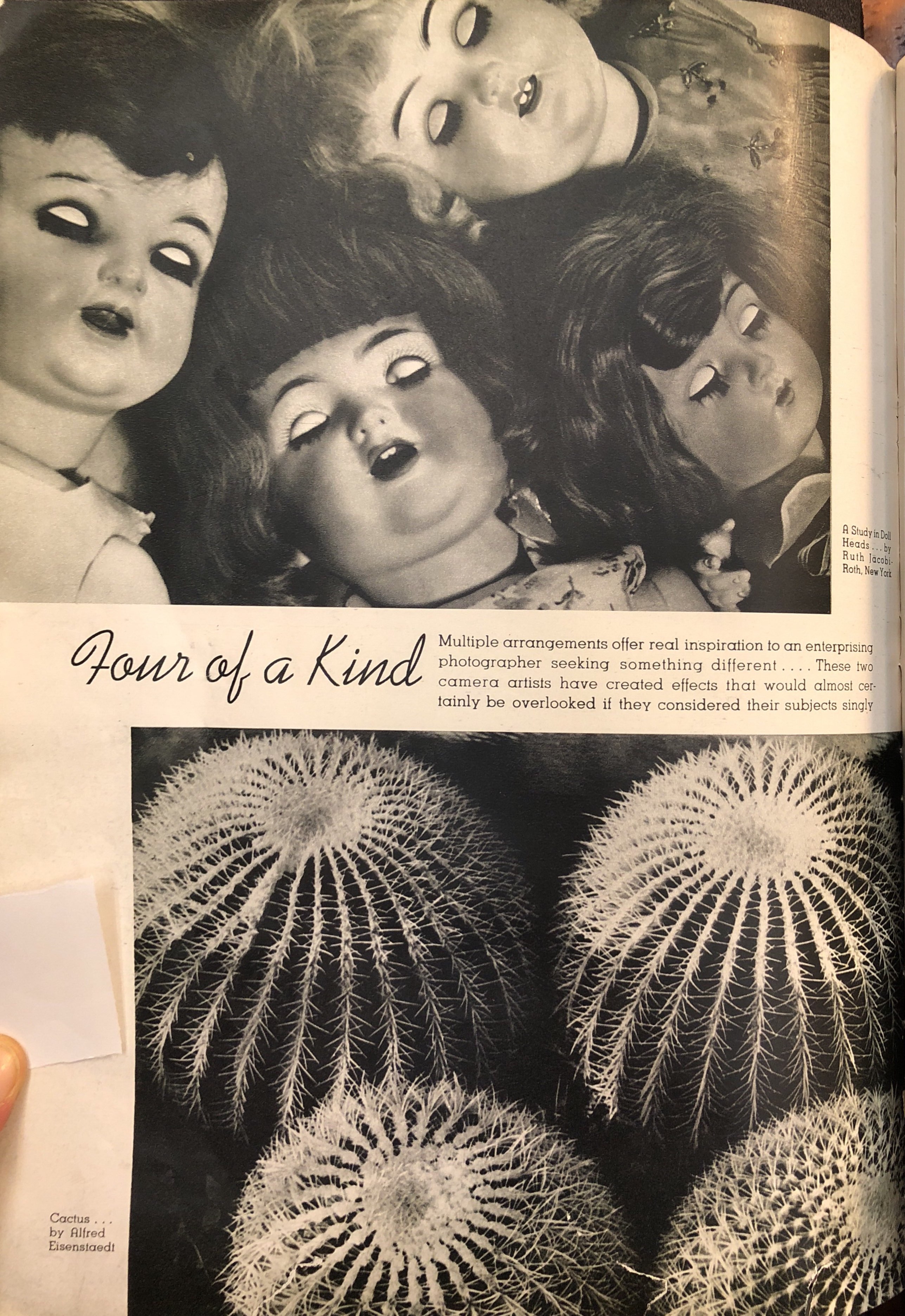
A Study in Doll Heads by Ruth Jacobi-Roth published in "Salon Section. Four Of A Kind." Popular Photography, December 1937, p. 48 (Photo: Helene Roth). 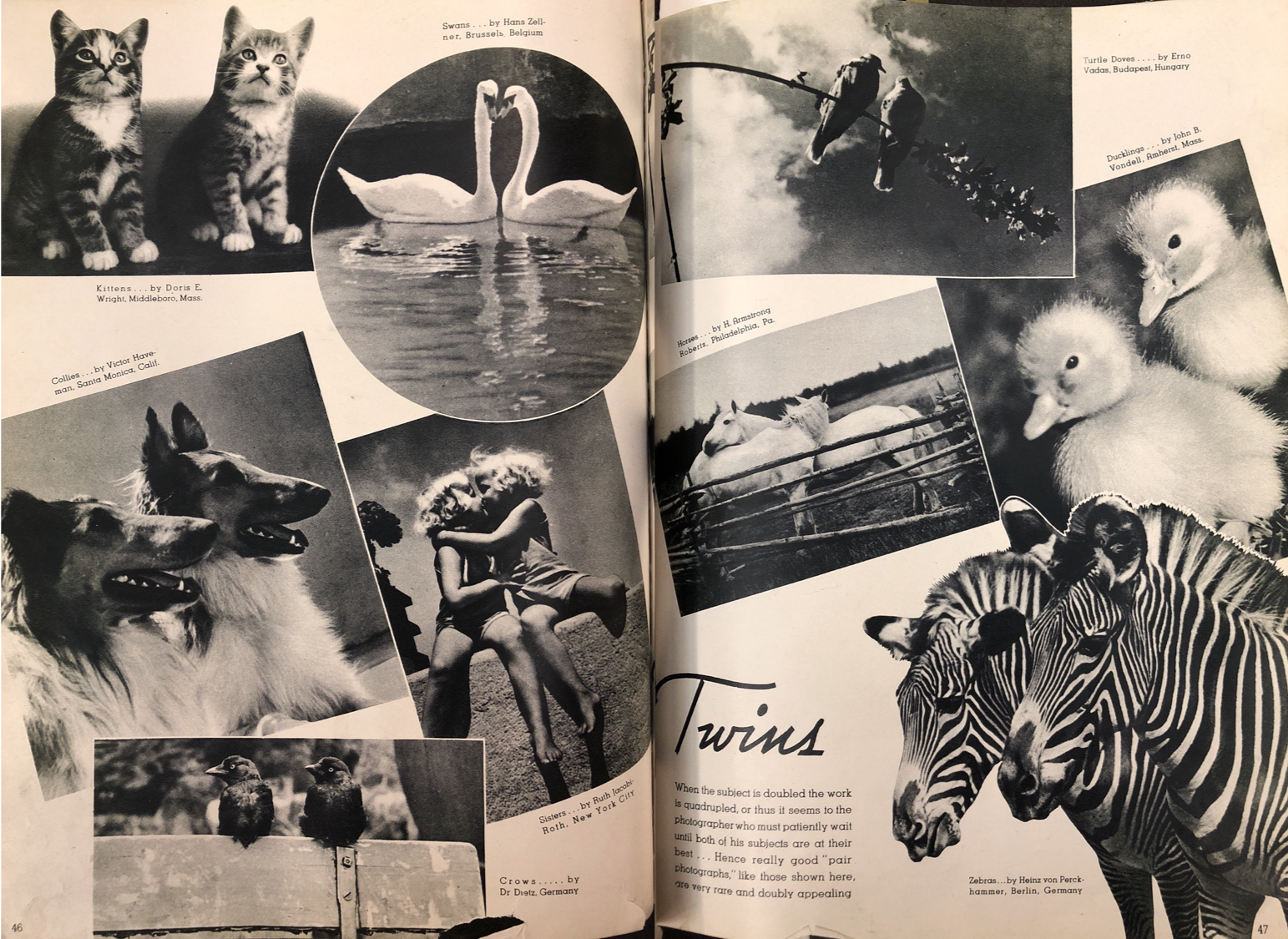
Sisters by Ruth Jacobi-Roth for the "Salon Section. Twins." Popular Photography, February 1938, pp. 46–47 (Photo: Helene Roth). 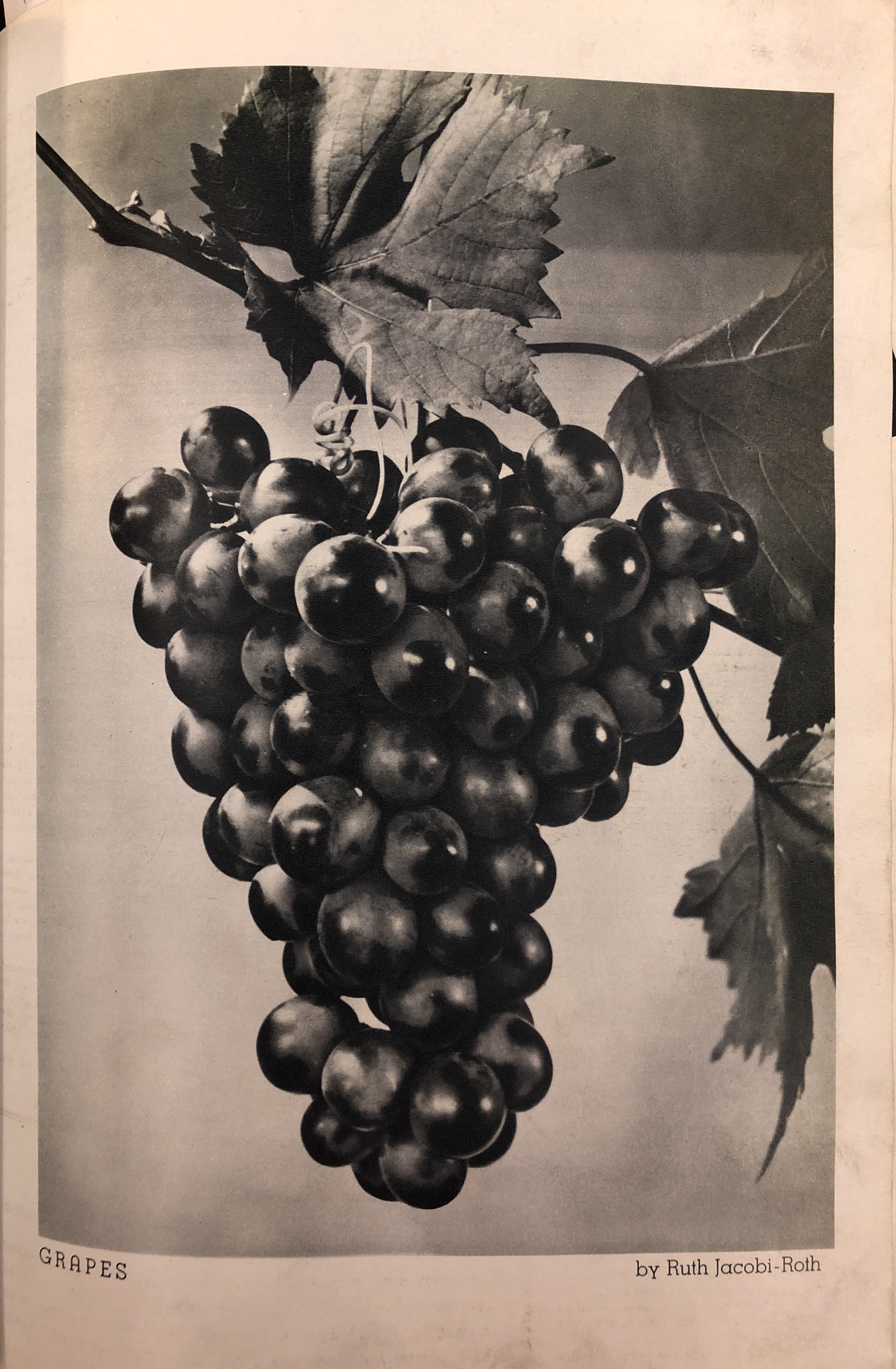
Ruth Jacobi-Roth, Grapes, published in the “Picture of the Months” section of Popular Photography, March 1938, p. 42 (Photo: Helene Roth). 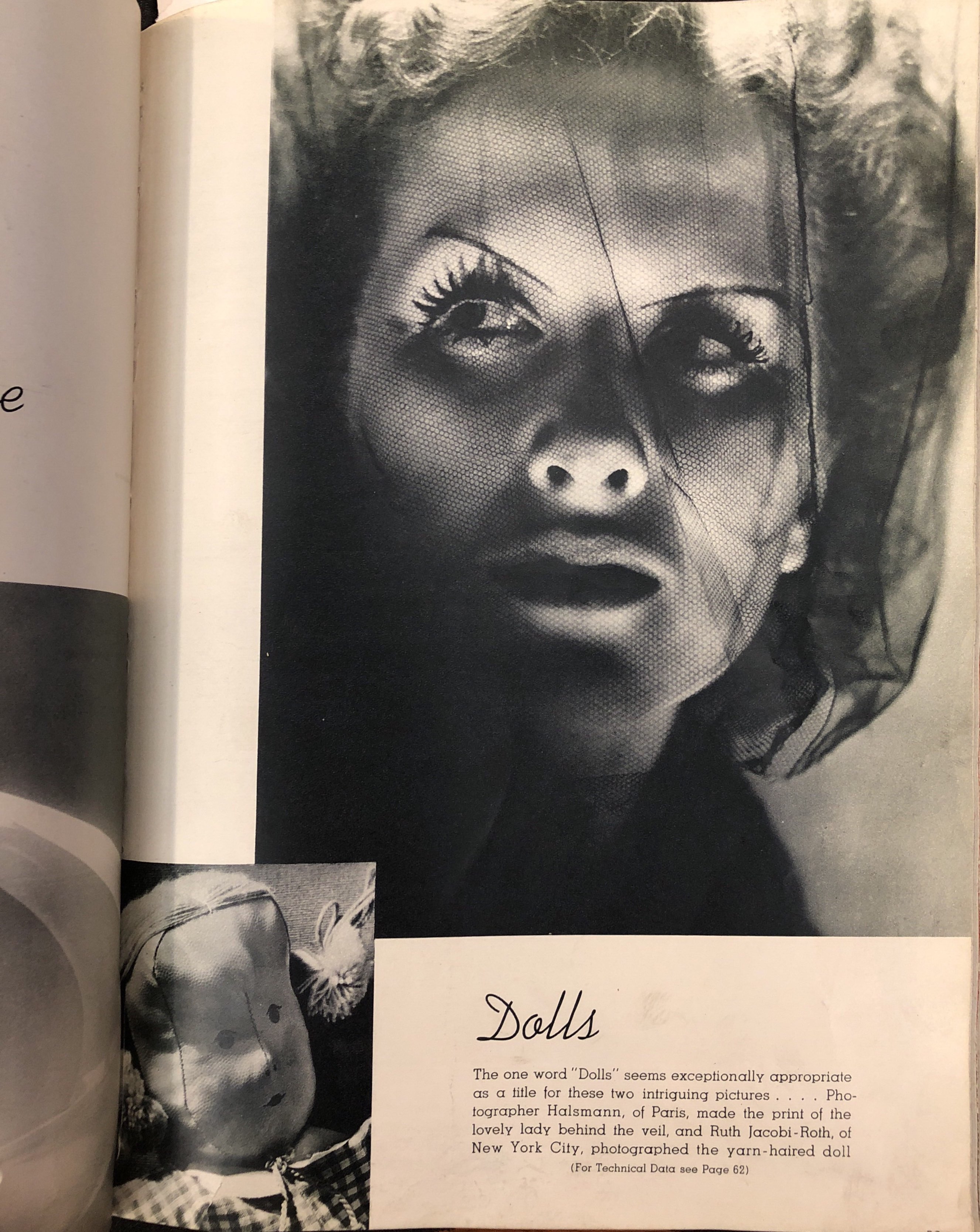
Ruth Jacobi-Roth, Doll, published in "Salon Section." Popular Photography, March 1938, p. 53 (Photo: Helene Roth). 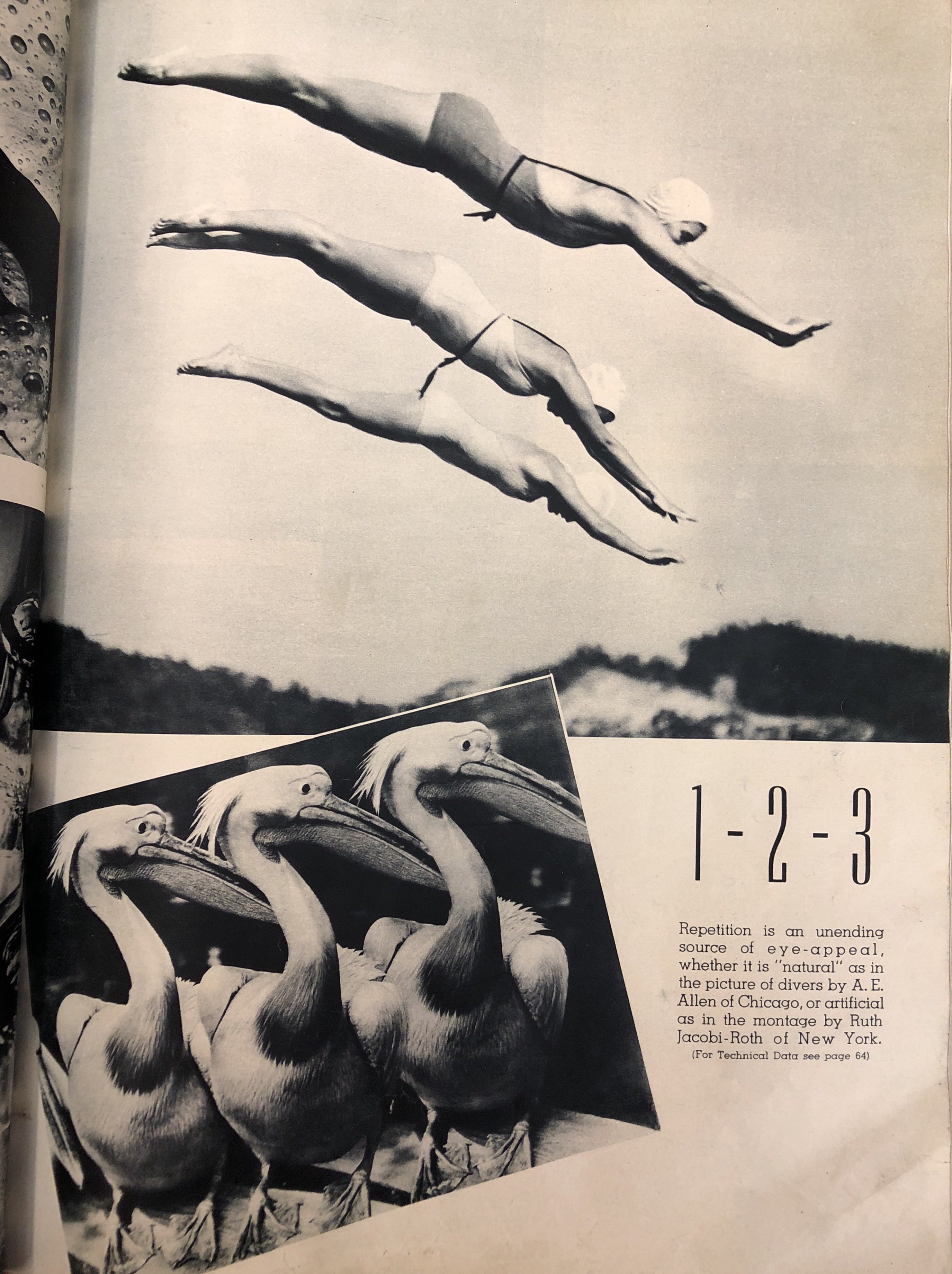
Montage of three pelicans by Ruth Jacobi-Roth published in "Salon Section 1-2-3." Popular Photography, March 1939, p. 47 (Photo: Helene Roth). 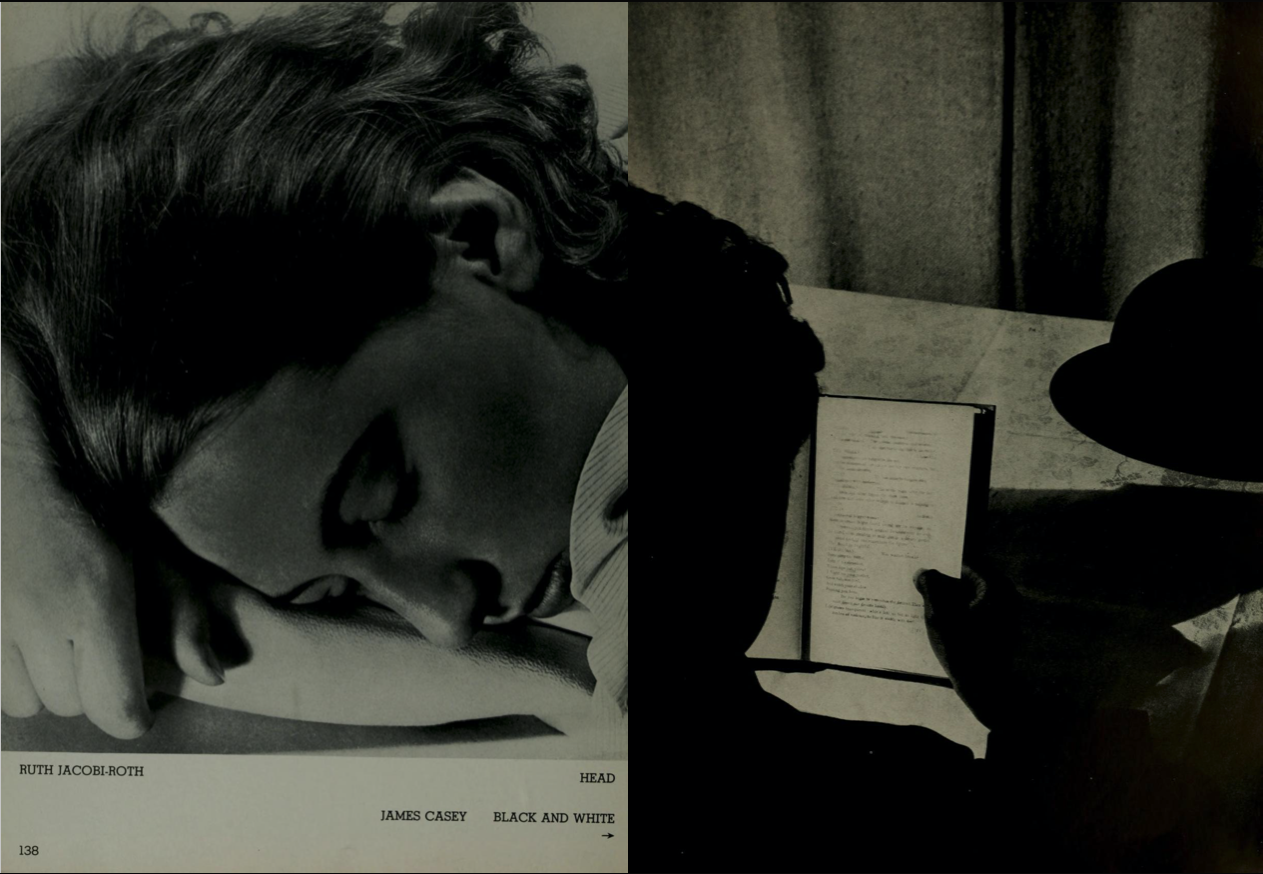
Head by Ruth Jacobi-Roth published in Maloney 1940, p. 138 (Photo: Helene Roth). 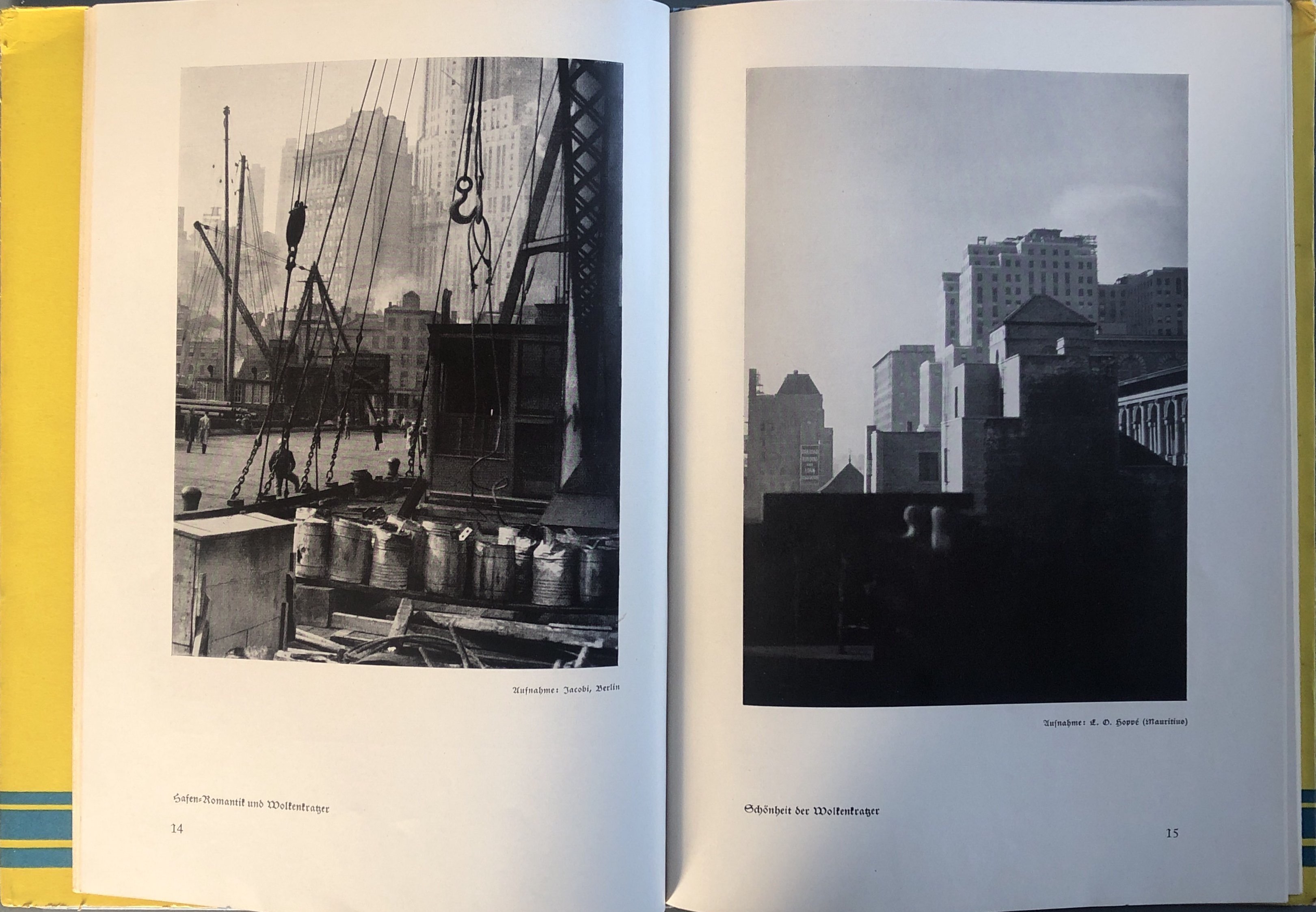
Hafen-Romantik und Wolkenkratzer (image by Jacobi, Berlin) and Schönheit der Wolkenkratzer (image by E.O. Hoppé, Mauritius) in New York, published in Leitich 1932, pp. 14–15 (Archive Helene Roth). 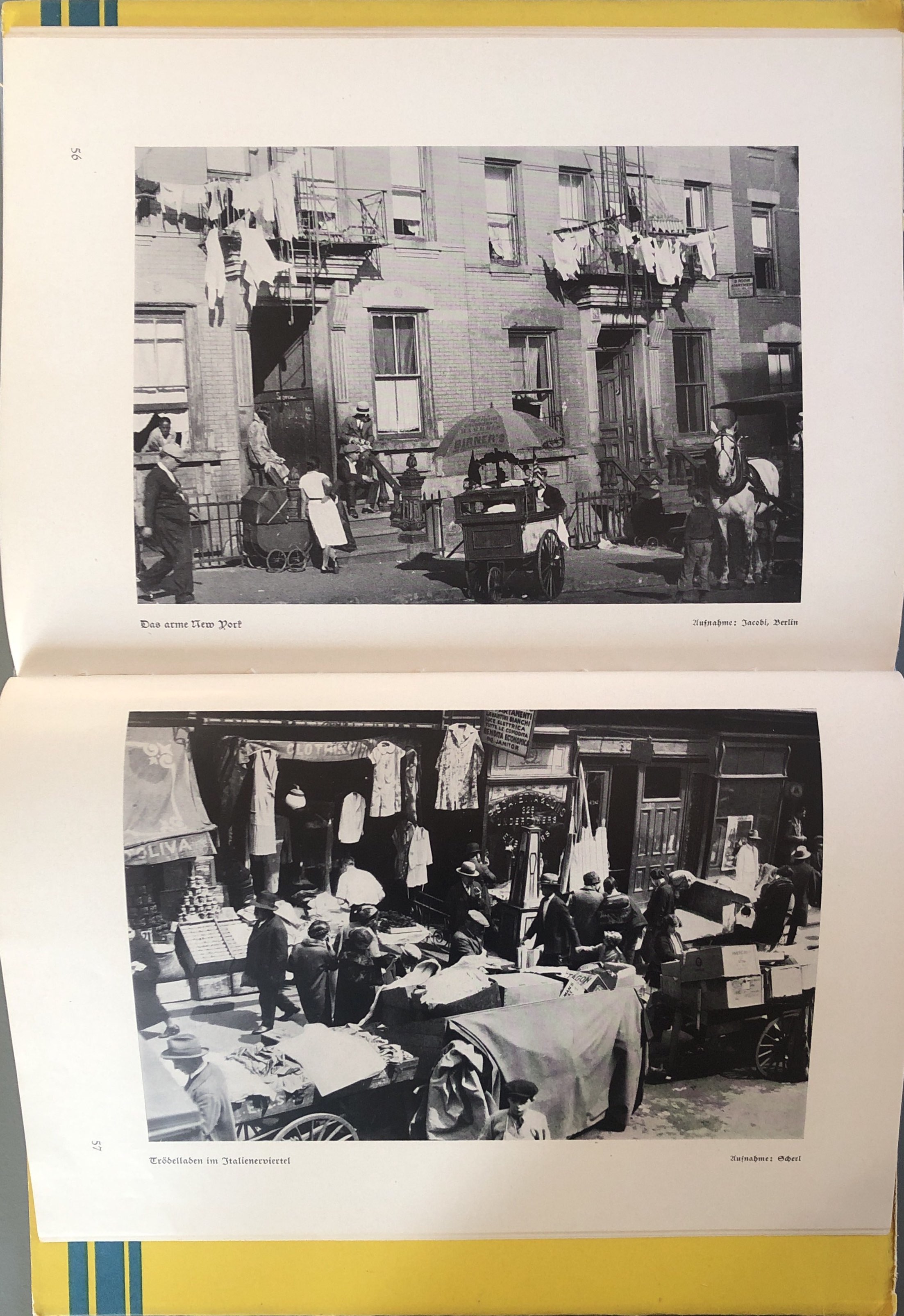
Das arme New York (image by Jacobi, Berlin); Trödelladen im Italienerviertel (image by Scherl) New York, published in Leitich 1932, pp. 56–57 (Archive Helene Roth). 
Medical Center, die größte Klinik der Welt (am oberen Hudson) (image by Presse-Photo, Berlin); Tausendäugige Häuserfront (image by Jacobi, Berlin), New York, published in Leitich 1932, pp. 48–49 (Archive Helene Roth). 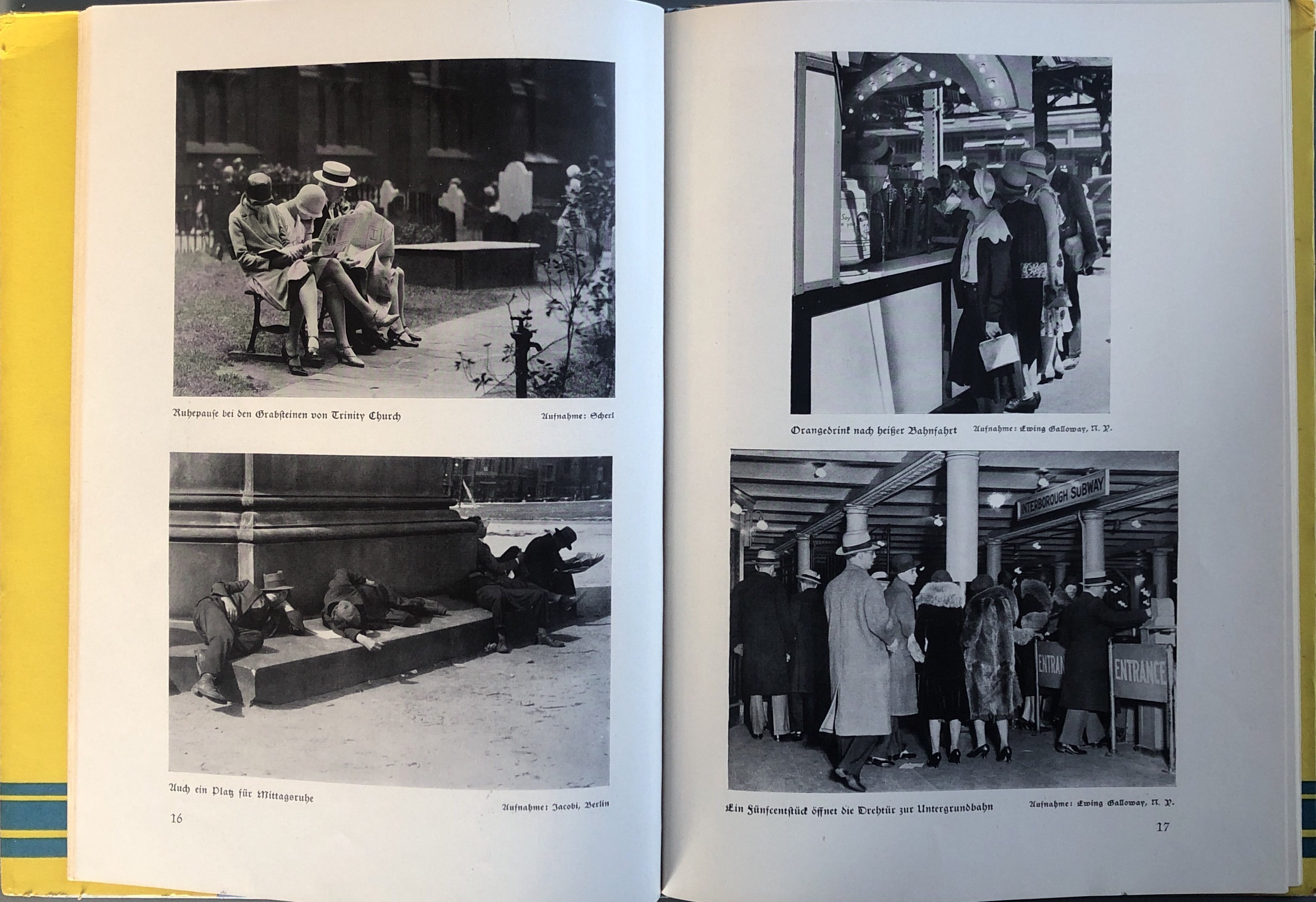
Ruhepause bei den Grabsteinen der Trinity Church (image by Scherl); Auch ein Platz für Mittagsruhe (image by Jacobi, Berlin); Orangedrink nach heißer Bahnhfahrt (image by Ewing Galloway, N.Y); Ein Fünfcentstück öffnet die Drehtür zur Untergrundbahn (image by Ewing Galloway, N.Y), published in Leitich 1932, pp. 16–17 (Archive Helene Roth). Anonymous. "Salon Section. Four Of A Kind." Popular Photography, December 1937, pp. 48–49.
Anonymous. "Salon Section. Twins." Popular Photography, February 1938, pp. 46–47; 68.
Anonymous. "Picture of the Months" Popular Photography, March 1938, pp. 42–43; 62.
Anonymous. "Salon Section. Dolls." Popular Photography, March 1938, pp. 52–53; 62.
Anonymous. "Salon Section. 1-2-3." Popular Photography, March 1939, pp. 47–48; 64.
Atelier Lotte Jacobi. Berlin – New York, edited by Marion Beckers and Elisabeth Moortgat, exh. cat. Das Verborgene Museum, Berlin, 1997.
Maloney, Tom. U.S. Camera. Annual 1940. Random House, 1940.
Ruth Jacobi. Fotografien, edited by Aubrey Pomerance, exh. cat. Jüdisches Museum Berlin, Berlin, 2008.
Word Count: 101
My deepest thanks go to Sherard Harrington of the University of New Hampshire for providing me with material and images by Ruth and Lotte Jacobi.
Word Count: 25
New York, US (1928–1930); New York, US (1935–1970s?).
Post Avenue, Inwood, New York City (residence, 1935–1936); Astoria, Queens, New York City (residence, 1936–ca.1970s); 1393 Six Avenue 57th Street, Central Park South, Manhattan, New York City (studio, 30.10.1935–10.1936); Corner Madison Avenue to East 58th Street, Times Square District, Manhattan, New York City (studio, 10.1936–1939).
- New York
- Helene Roth. "Ruth Jacobi." METROMOD Archive, 2021, https://archive.metromod.net/viewer.p/69/2948/object/5138-10853161, last modified: 12-10-2021.
-
Walter SandersPhotographerNew York
Walter Sanders was a German émigré photographer. In 1938 he arrived in New York, where he worked from 1939 until the end of his life for the Black Star agency and, from 1944, for Life magazine.
Word Count: 33
Andreas FeiningerPhotographerWriterEditorNew YorkAndreas Feininger, was a German émigré photographer who arrived in New York with his wife Wysse Feininger in 1939. He started a lifelong career exploring the city's streets, working as a photojournalist and writing a large number of photography manuals.
Word Count: 39
Ruth BernhardPhotographerNew YorkRuth Bernhard was a German émigré photographer who lived in New York from the 1920s to the 1940s. Beside her series on female nudes, her place in the photography network, as well as in the New York queer scene, is unknown and understudied.
Word Count: 43
Lotte JacobiPhotographerNew YorkIn October 1935 the German émigré photographer Lotte Jacobi, together with her sister Ruth Jacobi, opened a photo studio on 57th Street. The two sisters had to leave their parents' photo studio in Berlin in the 1930s and emigrated to New York.
Word Count: 41
Gerda PeterichPhotographerNew YorkThe German émigré Gerda Peterich had a photographic studio at 332 West 56th Street and in New York, where she specialised in dance and portraiture. In addition, she visited dance studios and photographed outside in the city.
Word Count: 36
Ann Tizia LeitichJournalistAuthorArt CriticNew YorkAnn Tizia Leitich was an émigré Austrian author, journalist and art critic, who wrote essays, feuilletons and reviews on the American society and women for German and Austrian newspapers.
Word Count: 29
Carola GregorPhotographerSculptorNew YorkThe German émigré photographer Carola Gregor was an animal and child photographer and published some of her work in magazines and books. Today her work and life are almost forgotten.
Word Count: 30
Trude FleischmannPhotographerNew YorkTrude Fleischmann was an Austrian-Jewish portrait and dance photographer who emigrated in 1939 to New York, where she opened a studio in Midtown Manhattan with the photographer Frank Elmer.
Word Count: 28
New YorkBookPhotobookNew YorkIn 1932, after her remigration to Vienna, the Austrian journalist Ann Tizia Leitich published New York, an account of her life and writing experiences started as an emigrant in New York in the 1920s.
Word Count: 33
Christmas Exhibition of The Center for European Immigrant's Art and HandicraftSpiratonePhoto SupplierNew YorkSpiratone was a photo company and photo supplier founded in 1941 by the Austrian émigré family Hans (1888–1944) and Paula Spira (?–?) and their son Fred Spira (1924–2007).
Word Count: 24
Hermann LandshoffPhotographerNew YorkBesides outdoor fashion shots, Hermann Landshoff was a portrait and street photographer. During his time in New York, he captured the cultural, artistic and intellectual émigré scene as well as his photographer colleagues.
Word Count: 33
Kurt SafranskiPicture AgentFounding MemberTeacherCartoonistPublisherIllustratorNew YorkKurt Safranski was one of the founding members of the Black Star photo agency, a teacher at the New School for Social Research and the author of photojournalistic articles and books.
Word Count: 31
Werner WolffPhotographerNew YorkWerner Wolff was forced to leave Germany in 1936 due to his Jewish background and emigrated via Hamburg to New York, where he could follow his career as photographer and photojournalist.
Word Count: 30
Josef BreitenbachPhotographerNew YorkOn arriving in New York in 1941, the German photographer Josef Breitenbach tried to restart as a portrait, street and experimental photographer, as well as a teacher of photo-history and techniques.
Word Count: 30
Lisette ModelPhotographerNew YorkLisette Model was an Austrian-born photographer who lived in New York with her husband Evsa Model after emigrating from France. Her street photographs capturing the curiosities of everyday life quickly caught the interest of museums and magazines.
Word Count: 37
Alexey BrodovitchPhotographerArt DirectorGraphic DesignerNew YorkAlexey Brodovitch was a Belarus-born émigré graphic artist, art director and photographer who, from 1933, worked in New York for Harper’s Bazaar magazine and at the New School for Social Research.
Word Count: 31
Rolf TietgensPhotographerEditorWriterNew YorkRolf Tietgens was a German émigré photographer who arrived in New York in 1938. Although, in the course of his photographic career, his artistic and surrealist images were published and shown at exhibitions, his work, today, is very little known.
Word Count: 39
John HeartfieldArtistGraphic DesignerFotomonteur (mounter of photographs)LondonAfter escaping from his first exile in Prague in December 1938, the political artist John Heartfield lived in London since 1950, working for Picture Post and the publisher Lindsay Drummond.
Word Count: 28
Lilly JossPhotographerNew YorkLilly Joss was an émigré freelance photographer in New York. She worked for the Black Star photo agency and magazines and was also a portrait and theatre photographer.
Word Count: 28
YllaPhotographerNew YorkYlla was an Austrian-born photographer who emigrated to New York in 1941. Specialising in animal photography, she produced not only studio photographs, but also shot outside on urban locations in the metropolis.
Word Count: 31
Fritz HenlePhotographerNew YorkFritz Henle was a German Jewish photographer who emigrated in 1936 to New York, where he worked as a photojournalist for various magazines. He also published several photobooks of his travels throughout North America and Asia.
Word Count: 35
Ernest MayerPicture AgentFounding MemberPublisherNew YorkErnest Mayer was co-founder of the Black Star Publishing Company photo agency, which built a network for émigré photographers and the American magazine scene from the mid-1930s until the end of the 1950s.
Word Count: 34
Rudy BurckhardtPhotographerFilmmakerPainterNew YorkRudy Burckhardt was a Swiss-born photographer, filmmaker and painter who emigrated from Basle to New York City in 1935. He was well networked within the emerging Abstract Expressionist art scene of 1940s' and 50s'.
Word Count: 33
Black Star AgencyPhoto AgencyNew YorkThe German émigrés Kurt S(z)afranski, Ern(e)st Mayer and Kurt Kornfeld founded Black Star in 1936. The photo agency established was a well-run networking institution in New York.
Word Count: 31
Julien Levy GalleryArt GalleryNew YorkThe Julien Levy Gallery was founded by the art dealer Julien Levy (1906–1981) in 1931, and was situated in the New York gallery district around 57th Street, where the Weyhe and Norlyst Gallery were also located.
Word Count: 34